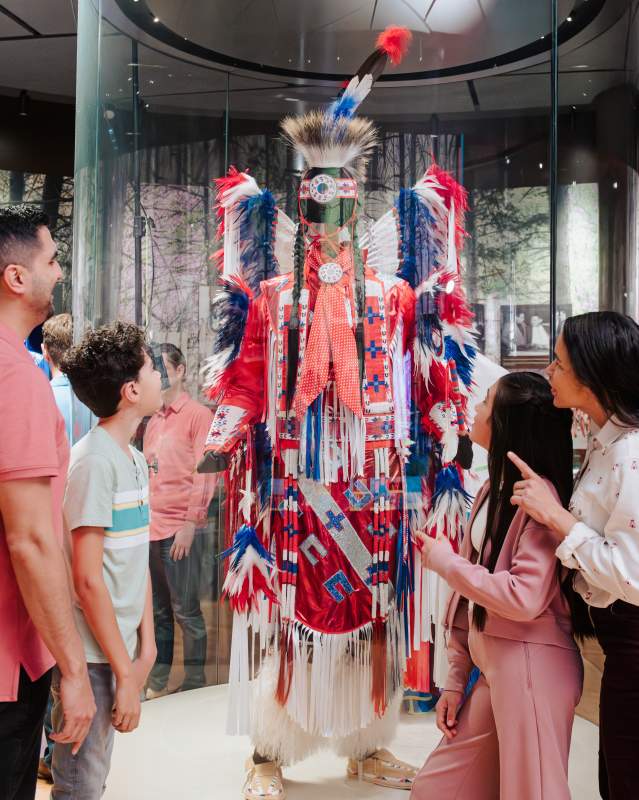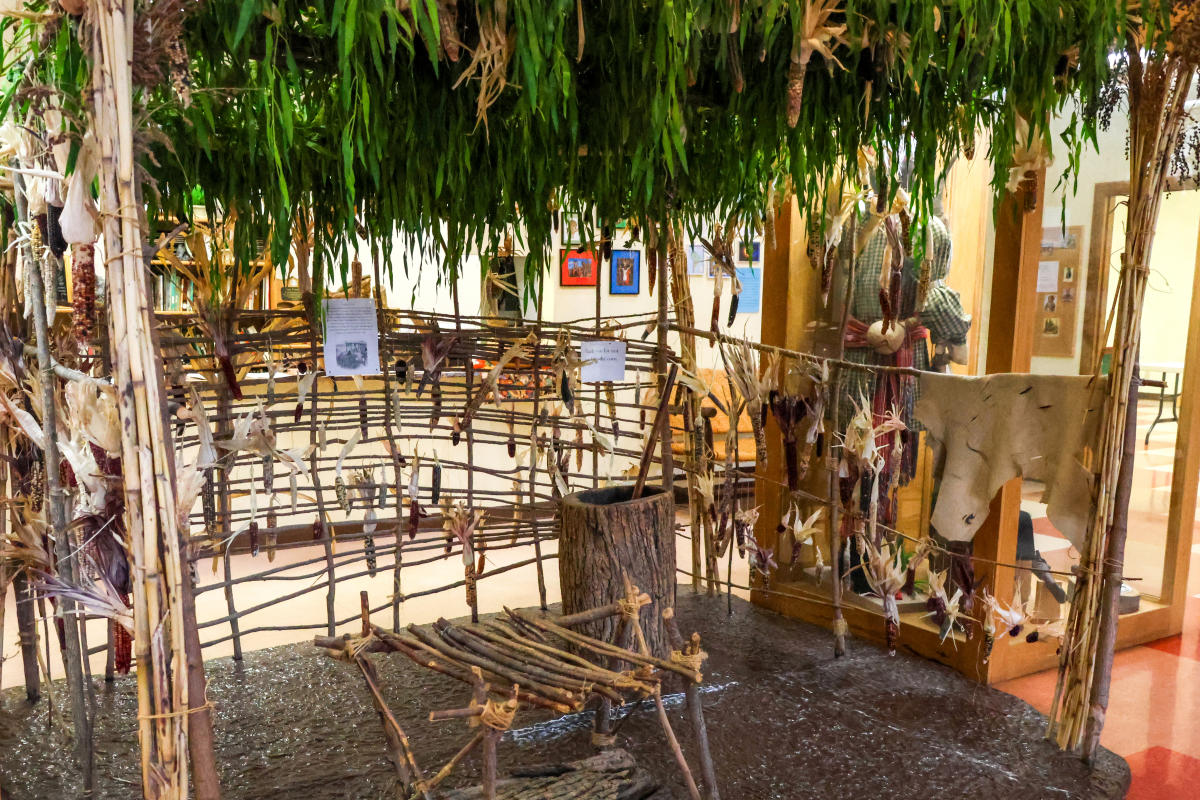
The Digital Custodian: Exploring a Native American Museum App for Enhanced Visitor Engagement
Abstract: In an increasingly digitized world, museums are leveraging technology to deepen visitor engagement and broaden their educational reach. For Native American museums, a bespoke mobile application represents a powerful tool to transcend traditional exhibition formats, offering immersive, interactive, and ethically conscious pathways to understanding Indigenous cultures. This article explores the multifaceted design and functionalities of such an app, examining its potential to enhance pre-visit planning, on-site navigation, interpretive content delivery, and post-visit learning, all while upholding principles of decolonization, authentic Indigenous voice, and cultural sensitivity. It posits that a thoughtfully developed app can transform the museum experience from passive observation to an active, informed, and respectful encounter with living Indigenous heritage.
1. Introduction: The Evolving Landscape of Museum Pedagogy and Technology
The digital revolution has profoundly reshaped how cultural institutions interact with their audiences. Modern visitors, accustomed to personalized and on-demand information, expect more than static displays. For Native American museums, this technological shift presents a unique opportunity, but also a significant responsibility. Historically, many museums have perpetuated colonial narratives, often presenting Indigenous cultures as relics of the past rather than vibrant, evolving societies. A dedicated mobile application, designed with Indigenous perspectives at its core, can serve as a crucial instrument in decolonizing the museum space, offering authentic voices, nuanced interpretations, and dynamic engagement with the rich tapestry of Native American heritage. This article delves into the comprehensive design and pedagogical utility of such an app, detailing its features and the ethical considerations paramount to its development.

2. The Imperative for a Digital Interface in Native American Museums
A Native American museum app is not merely an auxiliary tool; it is an essential component of contemporary museum practice, addressing several critical needs:
- Bridging Historical Gaps: Many visitors arrive with preconceived notions or limited knowledge of Native American history and contemporary life. The app can serve as a primary educational conduit, offering accurate, detailed, and culturally contextualized information that challenges stereotypes and fills knowledge voids.
- Empowering Indigenous Voices: A central tenet of decolonization is shifting narrative authority to Indigenous peoples. The app provides a platform for tribal elders, artists, historians, and community members to share their stories, languages, and perspectives directly, fostering a more authentic and respectful understanding.
- Showcasing Living Cultures: Native American cultures are dynamic and enduring. The app can highlight contemporary artists, activists, and cultural practices, demonstrating the vitality and continuity of Indigenous traditions in the modern world, moving beyond a sole focus on historical artifacts.
- Enhanced Accessibility and Inclusivity: Digital platforms can overcome physical barriers, offering multilingual content (including Indigenous languages), accessibility features for visitors with disabilities, and remote access to educational resources, thereby broadening the museum’s reach.
- Deepening Engagement: Traditional text panels can be limiting. An app can integrate multimedia elements, interactive activities, and personalized pathways, transforming passive viewing into an active, immersive learning experience.

3. Core Features and Functionalities of a Comprehensive Native American Museum App
A robust Native American museum app should encompass a range of features designed to enhance the visitor journey across multiple touchpoints:
3.1. Pre-Visit Planning and Orientation:
The app initiates the visitor experience before arrival, setting expectations and facilitating logistical planning.
- Virtual Tours & Previews: Short video tours or 360-degree panoramas of key exhibits can pique interest and help visitors prioritize their on-site experience.
- Exhibition Overviews: Detailed descriptions of current and upcoming exhibitions, including themes, featured artists, and cultural significance.
- Logistical Information: Operating hours, admission fees, ticketing options, parking, directions, and public transportation routes.
- Cultural Etiquette Guidelines: Crucial for Native American museums, this section can provide respectful guidance on photography, interactions with sacred objects (if applicable), and appropriate conduct within culturally sensitive spaces.
- Language Options: Allowing visitors to select their preferred language for the app interface and content, including translations into major world languages and, critically, relevant Indigenous languages.
3.2. On-Site Engagement and Navigation:
Once at the museum, the app transforms into a personalized guide and interpreter.
- Interactive Wayfinding: GPS-enabled indoor mapping helps visitors navigate the museum layout, locate specific exhibits, restrooms, and amenities.
- Personalized Tour Paths: Visitors can select thematic tours (e.g., "Women in Native American Art," "Pre-Colonial Technologies," "Contemporary Indigenous Activism") or create custom routes based on their interests and available time.
- Contextual Content Delivery: Using proximity beacons (e.g., Bluetooth Low Energy), the app can automatically trigger relevant content as visitors approach specific artifacts or displays, ensuring timely and targeted information.
- Event Schedules: Real-time updates on live performances, storytelling sessions, elder talks, workshops, and other public programs.
3.3. Immersive and Interpretive Content Delivery:
This is the heart of the app’s educational mission, offering rich, multi-layered narratives.
- Multi-Modal Storytelling: Beyond text, the app provides:
- Audio Narratives: Featuring the voices of tribal elders, artists, curators, and historians, offering first-person accounts, traditional stories, ceremonial songs, and expert analyses.
- Video Documentaries: Short films exploring the making of artifacts, interviews with community members, or historical footage.
- High-Resolution Imagery: Zoomable images of artifacts, allowing detailed examination of craftsmanship and materials.
- Augmented Reality (AR) Overlays: Projecting digital information onto physical objects or spaces. For instance, an AR overlay might reconstruct a vanished village on a diorama, show the functional use of a tool, or animate a traditional dance.
- 3D Models: Interactive 3D renderings of complex artifacts, allowing rotation and detailed inspection from all angles.
- Deep Dives: Links to further reading, scholarly articles, tribal histories, and glossaries of Indigenous terms.
- Comparative Perspectives: Content that connects specific artifacts or themes to broader Indigenous movements, pan-tribal histories, or global Indigenous issues.
3.4. Interactive Learning and Engagement:
To foster active learning and critical thinking.
- Interactive Quizzes & Polls: Engaging visitors with questions related to exhibit content, encouraging reflection and knowledge retention.
- Digital Storyboards & Creation Tools: Allowing visitors to digitally "recreate" elements of a traditional craft, design patterns, or even compose a short narrative based on what they’ve learned.
- Reflection Prompts: Questions designed to encourage personal reflection on the presented narratives and their relevance to contemporary issues.
- Social Sharing Integration: Secure and respectful options for visitors to share their learning experiences and insights on social media (e.g., sharing a fact learned, a favorite artifact, or a reflection, with appropriate attribution).
3.5. Post-Visit Engagement and Continued Learning:
The app extends the museum experience beyond the physical visit.
- Personalized Summaries: A digital "memory book" of visited exhibits, favorited artifacts, and notes taken during the visit.
- Educational Resources: Links to online archives, educational curricula for educators, and scholarly databases related to Native American studies.
- Museum Shop Integration: Digital storefront for purchasing books, Native American art, and other museum merchandise, supporting Indigenous artists and the museum.
- Feedback Mechanism: A channel for visitors to provide feedback on their experience, contributing to continuous improvement.
- Membership & Donation Options: Facilitating continued support for the museum’s mission.
3.6. Accessibility and Inclusivity Features:
Ensuring the app is usable by all.
- Screen Reader Compatibility: For visually impaired users.
- Adjustable Text Size and Contrast: For various visual needs.
- Audio Descriptions: For visual content.
- Sign Language Interpretation: Videos for deaf or hard-of-hearing visitors.
- Multiple Language Support: As mentioned, including Indigenous languages where appropriate and feasible.
4. Ethical Considerations and Indigenous Voices: The Decolonizing Imperative
The development of a Native American museum app is fraught with ethical complexities, demanding a decolonized approach. The app must be a vehicle for Indigenous self-representation, not another tool for external interpretation.
- Authenticity and Authority: The paramount consideration is whose voices are amplified. The app must prioritize Indigenous perspectives, with content developed in close consultation and collaboration with tribal nations, elders, artists, and community members. This ensures accuracy, cultural appropriateness, and respect for traditional knowledge systems.
- Intellectual Property (IP) and Sacred Knowledge: Extreme caution must be exercised regarding the sharing of sensitive cultural information, sacred stories, ceremonial practices, or images of sacred objects. Protocols for data sharing, consent, and access must be established in collaboration with source communities to protect Indigenous intellectual property and prevent the commodification or misrepresentation of sacred knowledge. Not all knowledge is meant for public consumption, and the app must reflect this.
- Community Engagement and Co-Creation: The development process should be genuinely collaborative, involving Indigenous communities from the initial conceptualization phase through content creation, testing, and ongoing maintenance. This co-creation model ensures the app truly serves the needs and reflects the values of the communities it represents.
- Challenging Colonial Narratives: The app must actively work to dismantle historical biases and stereotypes. It should present nuanced historical accounts, acknowledge injustices, and celebrate Indigenous resilience and resistance, rather than perpetuating victim narratives or romanticizing the past.
- Data Privacy and Security: Rigorous data privacy protocols are essential, especially when dealing with personal information or potentially sensitive cultural data.
5. Technological Underpinnings and Future Directions
The app’s infrastructure would likely involve a robust content management system (CMS), cloud-based storage, beacon technology for proximity-based content, and potentially AI for personalized recommendations. Future developments could include:
- AI-driven Personalization: More sophisticated AI could learn visitor preferences to offer hyper-personalized content and tour suggestions.
- Virtual Reality (VR) Extensions: Creating fully immersive VR experiences accessible both within and outside the museum.
- Integration with Educational Platforms: Seamlessly linking with school curricula and online learning platforms.
- Dynamic Content Updates: A system for Indigenous communities to directly contribute and update content, ensuring the app remains a living repository of their evolving cultures.
6. Conclusion: A Transformative Tool for Cultural Understanding and Empowerment
A Native American museum app, meticulously designed with an ethical framework and a commitment to Indigenous voice, stands as a transformative pedagogical tool. It moves beyond the traditional role of a museum guide, becoming a dynamic platform for decolonization, cultural revitalization, and empathetic understanding. By embracing technology in a culturally sensitive and collaborative manner, such an app can not only enhance the visitor experience but also empower Indigenous communities to tell their own stories, preserve their heritage, and foster a deeper, more respectful appreciation of their enduring contributions to the world. It is a digital custodian, safeguarding and sharing Indigenous knowledge for generations to come, fostering dialogue and building bridges of understanding in an increasingly interconnected global society.


